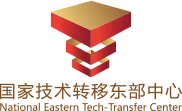Shanghai Enterprise Technology Corporation (AMT)
Feng Zhang, Senior Partner|Ven
Xiong Li's Senior Consultant|Wen
Senior Consultant
Abstracts.With the increasing development of information technology, the traditional closed innovation is no longer able to meet the business and strategic development of enterprises, only to adopt a more open approach to absorb external innovation resources, so as to quickly obtain new technologies and enhance core competitiveness. In the process of accepting external innovation by enterprises, many different models of open innovation have been demonstrated. However, how enterprises choose their own open innovation model, it must be combined with the type of industry, the company's development strategy, the company's management model, not only need to form a positive interaction with their own technological innovation resources and innovation capabilities, but also need to establish a sound information collection and protection network, rapid and comprehensive access to information on the progress of external technology.
Keywords: open innovation, science and technology services, innovation mechanism development
- Open innovation
1from closed to open innovation
Prior to the 1980s, most research was done inside research labs, with companies investing resources, advanced equipment, etc., into the in-house labs, and the generation, development, manufacturing, and marketing of innovative ideas was left to the companies themselves. The essence of this model is a closed and highly centralized model, i.e., closed innovation (Figure 1). Although the development process of closed innovation focuses on integration with the strategic goals of the enterprise and on cross-sector collaboration, the focus of resource integration remains on internal resources.
However, with the continuous development of information technology, the knowledge era promotes the continuous enhancement of innovation consciousness as well as the continuous shortening of the product cycle in the market, prompting enterprises from the "closed innovation" to "open innovation" mode of transformation. The so-called "open innovation" is based on the traditional closed innovation mode of a new enterprise innovation mode was born, compared with the closed innovation, open innovation in the innovation concept and practice have obvious differences. Open innovation is a balanced coordination of internal and external resources to generate innovative ideas, not only the target of innovation on the traditional product management, but also actively seek external technology licensing, technology partnerships, strategic alliances or venture capital and other appropriate business models to commercialize innovative ideas into reality and the formation of industrialization.
Closed innovation means that all kinds of ideas can only come from within the enterprise, and can only rely on internal forces for research and development, production and commercialization, which is very different from the open innovation model that emphasizes resource sharing in terms of innovation process, innovation resources, and the cycle and frequency of resource sharing.
1) Innovation process
Under the traditional closed innovation model, the creativity of an enterprise comes mostly from its internal employees; technology development and research and development rely mostly on internal technical departments, with limited contracts with external parties; the commercialization of new products is also a process in which the enterprise uses its own sales force to carry out activities such as market development, market trial sales, and even market promotion. In contrast, enterprises adopting the open innovation model, whose creativity is not limited to internal employees, can make use of the Internet and information technology to widely absorb the creativity existing in the leading users, mainstream users, suppliers, retailers and other stakeholders. Human resources, brand resources, word-of-mouth resources, etc. needed for marketing.
2) Innovation Resources
It is impossible for every enterprise to have all the resources needed for innovation, so the search and acquisition of innovation resources is one of the key links for enterprises to realize innovation. Under the traditional closed innovation mode, the scope and types of innovation resources that enterprises can obtain from the external environment are relatively narrow. In order to realize the "butterfly change" of innovation activities and the all-round success of the innovation process, enterprises must continuously exchange energy with the external environment and realize the sharing and value realization of tangible and intangible resources, which is the open innovation mode, and by realizing many types of innovation resources between the different stages of the innovation process and the external environment, enterprises can realize the innovation resources of the external environment. Omni-directional sharing to form a network of resources to speed up innovation and improve innovation performance.
3) Period and frequency of resource sharing
In the closed innovation mode, the communication, interaction and resource sharing between enterprises and the external environment are mostly short-term and discrete, lacking unified planning. For enterprises in open innovation mode, the resource interaction with external organizations is mostly planned in the overall development strategy of the company, and such sharing behavior is frequent, long-term and strategic, and it is easier to form long-term cooperation contracts with external organizations directly.
2Characteristics of open innovation
Chesbrough (2003), when he introduced the concept of open innovation, identified two aspects of it from a resource perspective, namely the simultaneous use of internal and external innovation resources and internal and external commercialization resources. Firms integrate internal and external innovation resources into one structure for technology development, while bringing internal technologies to market through their own channels or using external channels for commercialization. Open innovation is an innovation model in which firms systematically encourage and seek out innovation resources from a wide range of internal and external resources, consciously integrate their capabilities and resources with externally acquired resources, and exploit market opportunities through multiple channels (Figure 2).
3Open innovation model
From the meaning of open innovation, it can be seen that the model emphasizes the borderlessness of the organization, considering the organizational boundaries to be loose and permeable, thus allowing the multi-directional flow of internal and external resources, thus, open innovation utilizes the traditional R&D model while also striving to seek external channels for R&D and commercialization. The following are some common models of open innovation.
- Motivations for firms to implement open innovation
As information technology continues to evolve, companies must continue their innovation activities in order to gain and maintain a competitive advantage; as the economic level increases, consumers demand more and more powerful products with more and more functional requirements, placing a higher demand on innovation. As some product innovations often involve the intersection of knowledge in several fields, there is an increasing demand for expertise in different fields as well as for cutting-edge talents in that field, but the size of the enterprise is certain, which means that the resources possessed by the enterprise are limited relative to the changing external conditions, which requires the enterprise to partially shift the attention of acquiring innovation resources to outside the enterprise. To summarize, the main implications of implementing open innovation in firms can be summarized in four points.
- Role of service providers under open innovation
In the open innovation model, the ability of firms to access external knowledge resources is critical. This necessitates an increasing search for external professional services. On the one hand, it can effectively solve the problem of information asymmetry in the market economy and reduce technology transaction costs and information search costs; on the other hand, powerful scientific and technological service agencies can play the role of comprehensive services such as technology knowledge production, transfer and transformation, and knowledge application. The existing technologies are re-developed and marketed, and the company participates in the knowledge production at the front end of the innovation chain, providing high value-added services such as science and technology finance and management consulting in the whole process of the innovation chain, making it easier for scientific and technological achievements to penetrate into the enterprise through its borders, thus realizing the effective allocation of scientific and technological resources and innovation resources and enhancing the innovation capacity and performance of innovation subjects.
As a result, open innovation imposes new requirements on SBSs, while at the same time providing a broader scope for SBSs to develop.
1. From "intermediary" to "service" agencies
Open innovation emphasizes opening the "borders" of innovators/enterprises and realizing the utilization and integration of internal knowledge resources and external knowledge resources of innovators. The absorption and utilization of external knowledge resources is obviously not enough only based on the innovator's own learning and innovation capabilities, but also requires efficient knowledge transfer, transformation, absorption and utilization within the innovation system, as well as the enhancement of innovation services and "knowledge distribution power" of science and technology service institutions, and the improvement of "intermediary" and "knowledge distribution power". "to the role of "services", not limited to "intermediaries" and "bridges", but has expanded from single science and technology advice and technology transactions. A science and technology service organization that provides services for technical knowledge production, knowledge transfer and knowledge application.
2. Value-added links in the enterprise value chain
In the context of the globalization of the knowledge economy, science and technology service agencies have become part of the innovation system, with a single intermediary as the centre becoming weaker and weaker, and the former social service capacity weaker; in the future, science and technology service agencies will be transformed into intermediary agencies with both service and production functions, with production driving service and service promoting production, becoming a link in the innovation value chain with value-added effects. In the whole process of innovation, service agencies provide common services such as human resources, equipment platforms, information, intellectual property rights, etc. At the same time, at the stage of basic and applied research, service agencies provide services such as scientific data, literature and technology; at the stage of experimental development, they provide services such as technical standards, inspection and testing, technology integration, research and development services, technology markets and technology evaluation; and at the stage of technology commercialization, they provide services such as innovation and entrepreneurship, science and technology finance and innovation management.
- Service providers help companies open up and innovate
1. Clarify open innovation strategy
Open innovation has dynamic characteristics, different enterprise open innovation management model is related to the position of enterprises in the innovation system and the stage of technological development. For enterprises, the establishment of open innovation model is a long-term system project, during the construction period, enterprises need to look at the overall situation, from an overall perspective, and constantly improve and optimize the open innovation system. In addition, enterprises need to combine the internal and external environment and resource characteristics of the enterprise's strategic objectives, business model, to select a distinctive, suitable for their own open innovation strategy.
At the industry level, the equipment manufacturing, communications and network equipment, medical equipment, and financial services industries in which companies such as GE and Huawei operate are characterized by rapid technology development and short life cycles, the availability and mobility of talent, an active venture capital market, and high production capacity from external suppliers. In these industries, closed innovation is no longer adapted to the technological development and innovation needs of enterprises, it is necessary to face a broader range of external resources and actively develop open innovation.
From the company's perspective, with the continuous development of its business, the diversification of its products and the complexity of the markets in which it operates, it is important to make use of the scientific and technological resources of external organizations in order to reduce the costs and risks involved in the development of new products and technologies and to enter the target markets as soon as possible. At this time, enterprises should make strategic adjustments in a timely manner, adopt a more open and flexible approach, and actively attract and utilize external innovation.
2. Planning open innovation pathways
After adopting the open innovation strategy, enterprises need to plan the development path of open innovation, and through the achievement of milestones in stages, and finally establish an agile, efficient and sustainable open innovation system, from incremental innovation to breakthrough innovation transition, from existing business areas to new business areas of expansion.
In general, a company's roadmap for establishing open innovation includes three maturity areas, and two key capabilities.
Open innovation in firms needs to go through three main stages: first, to develop short-term impact and quick wins; second, to build basic capabilities; and third, to develop sustainable advantages of open innovation.
The two key competencies refer to: effective partner management and development capacity; and an open culture of innovation and innovation capacity development.
1) Effective partner management and development
Initially, the enterprise needs to establish a good management mechanism for the partners, including: clarifying the functions, responsibilities and ownership of the partners; at the same time, it should establish a sound selection criteria and evaluation, elimination and exit mechanism for the partners.
In the medium term, the enterprise needs to solidify and implement the management mechanism of the partner using key processes and systems, including: the selection of the partner, the establishment of the partnership and the integration of innovation resources and activities between the two parties, by inviting the partner to join, to optimize the enterprise's innovation activities and improve the efficiency of cooperation between the two parties.
At a later stage, as experience is gained, companies need to clarify the boundary conditions, applications and contingency plans for open innovation to reduce surprises and improve the sustainability of third-party management.
2) Open innovation culture and capacity building
Enterprises need to build an open innovation platform system, gradually standardize the processes related to open innovation, and train relevant talents within the enterprise to develop their corresponding capabilities.
In the long term, companies need to integrate open innovation with their business expansion and value capture to gain a sustainable competitive advantage in innovation.
Companies need to choose the open innovation platform model that is closest to their needs. However, regardless of which model is adopted, choosing an open innovation strategy does not mean that companies can reduce their investment in and control of the innovation process, nor can they abandon their internal innovation.
3. Establishment of open innovation mechanisms
Enterprises also need to establish an open innovation mechanism to enable open innovation strategies to be grounded. The innovation mechanism includes the enterprise open innovation operation process, management model and information security.
1) Open innovation operating process
The operational process of open innovation includes the question of when, with whom, for what purpose, and in what way with collaborators external to the enterprise. External collaborators can include many types of players such as suppliers, customers, competitors, research institutions, financial institutions and intermediaries. The challenge for the OI process is to capture all of these complex elements in one operating mechanism.
The type of open innovation, the participants and the implementation measures can all be different at different points in the value chain. In the figure below, the operating process of open innovation is based on the internal innovation process under closed innovation (see solid line box in Figure 4), and open innovation occurs when one part of this original closed innovation process is broken (see dashed line box in Figure 4), and the specific implementation measures for open innovation at each link are described.
2) Open innovation management model
The absorption and integration of external scientific and technological resources through open innovation requires a high degree of flexibility and responsiveness on the part of firms, as well as open and flexible management models. For example, companies can establish a rapid response mechanism, as corporate R&D requires not only quality and access to highly sophisticated technology, but also speed. Close communication with customers, salespeople, and technology partners from the early stages of innovation is necessary to provide the most practical solutions in a timely manner. For example, Huawei started to change its management model in 1997, putting forward management objectives in line with its international strategy, and spent a considerable part of the funds to hire a management consulting firm to study and design Huawei's various management processes and management systems, forming an open innovation management model. In recent years, Shell has encountered a number of challenges, such as the division of departments, the disconnect between technology development and application, etc. In order to solve these problems, the company has adjusted its technology innovation organization system and built a project and technology department (Projects & Technology). Especially in recent years, Shell has encountered some challenges, such as departmental fragmentation, disconnect between technology research and development and application, etc. In order to solve these problems, the company has adjusted its technology innovation organization system, set up the Projects & Technology Department, and established a series of funds and innovation organizations in order to make extensive use of unplanned innovation and external innovation. and thus promote and stimulate their innovation systems.
3) Open Innovation Information Assurance
In order to better cooperate with external resources, enterprises need to keep abreast of technology development trends, technology acquisition objects, patent acquisition methods, relevant national policies and other information, so it is necessary to establish a more complete information collection and monitoring network.
GE has established a monitoring network that is closely linked to the global innovation cluster. Technical inspectors are based in GE's global R&D centers in India, China, Germany, the U.S., and Brazil, and have access to local companies and innovation networks to conduct benchmarking activities, scan the competitive landscape, and evaluate whether and how external technologies are adapting or gaining a competitive advantage.
- Summary and outlook
In an environment of increasing technological complexity, shorter product life cycles, and global competition, the trend towards innovation development is to make good use of external resources and to network R&D and innovation. Due to changes in the innovation environment, the availability and mobility of human resources has become more and more powerful, the rise of the venture capital market; the external choices faced by shelved research results; the increasing production capacity of external suppliers and other disruptive factors have broken the virtuous cycle of closed innovation, and the traditional innovation model is no longer adapted to the development situation.
Today, more and more companies are adopting open innovation strategies to open the door to innovation, accelerate internal innovation, improve innovation performance, and create "highly interconnected" open innovation systems. However, building open innovation capabilities is not something that happens overnight and can be challenging to manage. Enterprises need to be organically integrated with the existing innovation system, and external innovation should always rely on the foundation of internal innovation in order to be effectively implemented. Corporate executives, the headquarters innovation center, business units and functional departments need to work together to make full use of powerful technological tools to establish an open innovation system with complementary internal and external resources to develop the overall innovation capacity of the enterprise in the long term and as a whole. Open innovation does not negate internal R&D, but rather maximizes R&D efficiency under the background of abundant external technical resources and frequent knowledge flow, enhances the status of users, suppliers, venture capitalists and intellectual property practitioners, makes full use of and integrates internal and external knowledge and resources, builds an innovation ecosystem and creates a global and sustainable innovation capability.
References.
[1] Liu Wei. Research on the evolution mechanism of innovation capability of technology-intensive enterprises under open innovation environment[D]. China University of Geosciences, 2013.
[2] Chesbrough, H. Open Innovation: The New Imperative for Creating and Profiting from Technologists [M]. Boston: Harvard Business School
Press, 2003.
[3] Gong Minqing, Xiao Yuefeng. Review of open innovation research[J]. Science Management Research,2011,(8):13.
[4] Liu Genjie. A Multiperspective Study of Open Innovation Paradigm - Model Comparison, Welfare Analysis, Risk Prevention, and Case Study [D]. Nankai University, 2013.
[5] Yuan Lei, Yang Hong, He Yanqing. Motivations and patterns of open innovation in large advanced enterprises at home and abroad[J]. Petroleum Technology Forum, 2015(4):25-31.
[6] Lin Guanxiu. Research on Enterprise Open Innovation and its Operation Mechanism - A Case Study Based on Huawei Corporation [D]. Jinan University, 2007.
[7] Peng Jianfeng, Liu Jian. Shell: The myth of the "shell" in the oil industry [M]. Beijing: Machinery Industry Press, 2010:55-63.
[8] Yang Yan. Creating a Sustainable Energy Future with Technology - Technological Innovation Management in Shell[J]. International Petroleum Economics, 2011, 19(3):68-73.











